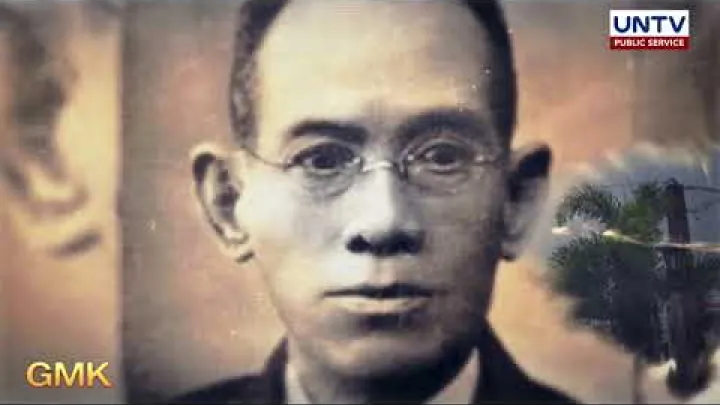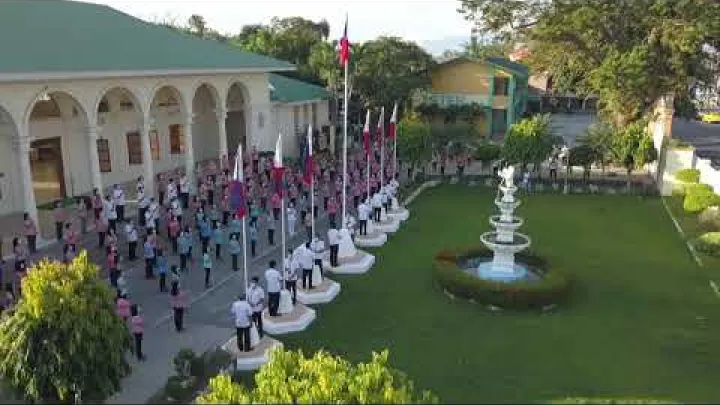Philippine National Anthem: Complete Lyrics, Composer, and Historical Background with Video Explanation
Discover the complete lyrics of the Philippine National Anthem, "Lupang Hinirang," in Filipino and English. Learn about its composer, Julian Felipe, and lyricist, Jose Palma, along with its historical and cultural significance, enhanced by a detailed video explanation.
Full Lyrics of the Philippine National Anthem ("Lupang Hinirang")
The official lyrics of the Philippine National Anthem, "Lupang Hinirang," are written in Filipino.
Original Filipino Lyrics:
Bayang magiliw, Perlas ng Silanganan,
Alab ng puso Sa dibdib mo’y buhay.
Lupang hinirang, Duyan ka ng magiting,
Sa manlulupig, Di ka pasisiil.
Sa dagat at bundok, Sa simoy at sa langit mong bughaw,
May dilag ang tula At awit sa paglayang minamahal.
Ang kislap ng watawat mo’y Tagumpay na nagniningning;
Ang bituin at araw niya Kailan pa ma’y di magdidilim.
Lupa ng araw, ng luwalhati’t pagsinta,
Buhay ay langit sa piling mo;
Aming ligaya na pag may mang-aapi,
Ang mamatay nang dahil sa’yo.
English Translation:
Beloved country, Pearl of the Orient,
The heart's fervor In your chest is alive.
Chosen land, Cradle of the brave,
To the oppressors, You shall never submit.
In the sea and mountain, In the breeze and your blue sky,
There is splendor in the poem And song for beloved freedom.
The sparkle of your flag Is the triumph that shines;
Its stars and sun Never shall grow dim.
Land of the sun, of glory and love,
Life is heaven in your embrace;
It is our joy, when there are oppressors,
To die because of you.
Who Composed the Philippine National Anthem?
The melody of the Philippine National Anthem was composed by Julian Felipe in 1898. A musician and nationalist, Felipe crafted the anthem initially as an instrumental march known as "Marcha Nacional Filipina." The lyrics were later added by Jose Palma, a revolutionary poet, in 1899.
The anthem was first performed during the declaration of Philippine independence on June 12, 1898, in Kawit, Cavite. It has since evolved to become a profound symbol of the Filipino people's identity and aspirations.
Symbolism and significance of the Philippine National Anthem
Every word and note of the Philippine National Anthem carries deep symbolism and significance. The anthem's lyrics, penned by Jose Palma, evoke a sense of national pride and unity. The first verse speaks of the beauty of the Philippines, with its majestic landscapes and bountiful resources. It highlights the importance of cherishing and protecting the nation's natural treasures.
The second verse delves into the rich history of the Filipino people, paying homage to their ancestors who fought bravely for freedom. It emphasizes the importance of remembering and honoring their sacrifices, as they serve as a guiding light for future generations.
The anthem's chorus, which is repeated after each verse, serves as a rallying cry for unity and patriotism. It calls upon all Filipinos to stand united and defend their homeland against any threat or adversity.
Evolution of the Philippine National Anthem
While the Philippine National Anthem has remained largely unchanged since its composition, it has undergone subtle modifications over the years. In 1962, an executive order was issued to standardize the anthem's rendition, ensuring that it is performed in the correct tempo and key.
In 1998, the National Historical Institute made a significant amendment to the anthem's lyrics. The original third verse, which had references to the American flag, was replaced with a new verse that emphasized the unity and diversity of the Filipino people.
These changes reflect the evolving nature of the Philippine National Anthem, adapting to the shifting socio-political landscape while preserving its core message of patriotism and love for the country.
Controversies surrounding the Philippine National Anthem
Throughout its history, the Philippine National Anthem has been embroiled in various controversies. One of the most notable controversies occurred during the American colonial period when the singing of the anthem was prohibited by the authorities. This ban was seen as an attempt to suppress Filipino nationalism and assert American dominance.
Another controversy arose in 2019 when a Filipino singer deviated from the traditional rendition of the anthem during an international sporting event. This incident sparked a heated debate about the proper way to perform the anthem and the importance of respecting its integrity and symbolism.
Despite these controversies, the Philippine National Anthem has remained a powerful symbol of national identity and unity, continuously inspiring Filipinos to uphold their heritage and fight for their rights.
Importance of the Philippine National Anthem in Filipino culture
The Philippine National Anthem holds a special place in Filipino culture. It is sung and played on various occasions, including Independence Day celebrations, school gatherings, and sporting events. The anthem serves as a reminder of the sacrifices made by past generations and the continuous struggle for freedom and independence.
Singing the anthem is not only an act of patriotism but also a way to connect with fellow Filipinos and strengthen the collective spirit of the nation. It instills a sense of pride and belonging in every Filipino, regardless of their background or beliefs.
Proper etiquette when singing or playing the Philippine National Anthem
When singing or playing the Philippine National Anthem, it is important to observe proper etiquette and respect the anthem's solemnity. Here are some guidelines to follow:
- Stand at attention: When the anthem begins, stand straight with your right hand over your heart. Show respect by maintaining a solemn and dignified posture throughout the performance.
- Sing with pride: If you know the lyrics, sing along with pride and enthusiasm. If you are unfamiliar with the lyrics, it is still important to show respect by remaining silent and attentive.
- Avoid distractions: Refrain from talking, laughing, or engaging in any distracting behavior while the anthem is being performed. Give your full attention to the anthem and the significance it holds.
- Face the flag: If there is a flag present, face it while the anthem is being performed. If there is no flag, face the direction where the flag would typically be located.
By observing these guidelines, we can collectively uphold the dignity and significance of the Philippine National Anthem, paying tribute to the sacrifices of our ancestors and fostering a sense of unity among Filipinos.
Promoting patriotism through the Philippine National Anthem
The Philippine National Anthem serves as a powerful tool for promoting patriotism and love for the country. It is not only a symbol of national identity but also a call to action, inspiring individuals to contribute to the betterment of their communities and the nation as a whole.
Schools play a crucial role in fostering patriotism through the anthem. By incorporating the anthem into the curriculum and organizing regular flag ceremonies, students are given the opportunity to learn about the anthem's history and significance. This helps instill a sense of pride and responsibility in the younger generation, ensuring that the spirit of the anthem lives on.
Inspiring stories related to the Philippine National Anthem
The Philippine National Anthem has inspired countless stories of courage, sacrifice, and resilience. One such story is that of the "Rizal Day Bombing" in 2000. During the commemoration of national hero Jose Rizal's death, a bomb exploded near a park where the anthem was being sung. Despite the chaos and tragedy, the people present continued singing the anthem, refusing to let fear prevail.
This act of defiance and unity in the face of adversity exemplifies the power of the Philippine National Anthem to inspire and uplift. It serves as a constant reminder that the Filipino people, united by their love for their country, are capable of overcoming any challenge.
Conclusion: Embracing the pride of the Philippine National Anthem
The resounding harmony of the Philippine National Anthem echoes through the ages, stirring the hearts of millions and igniting a deep-rooted pride in every Filipino. Its history, symbolism, and significance make it a cherished national treasure, symbolizing the enduring spirit of the Filipino people.
As we continue to sing the anthem with reverence and passion, let us remember the sacrifices of our ancestors and the struggles they endured for our freedom. Let us embrace the pride that the Philippine National Anthem instills in us, and let it serve as a constant reminder of our duty to uphold the values and aspirations of our nation.
In the resounding harmonies of the Philippine National Anthem, we find unity, strength, and hope for a brighter future. Let us raise our voices and hearts, and together, let us march forward, guided by the resounding anthem that unites us all.
Your Nearby Location
Your Favorite
Post content
All posting is Free of charge and registration is Not required.












